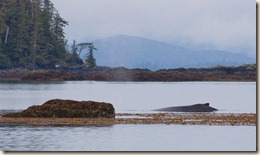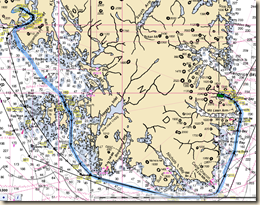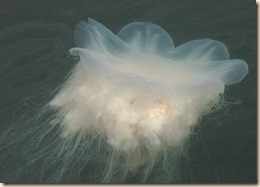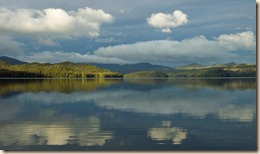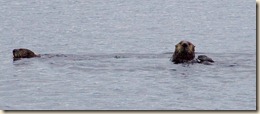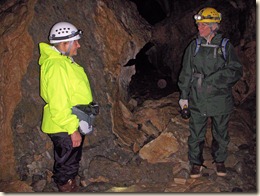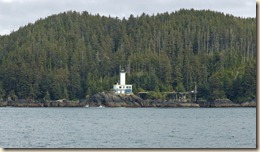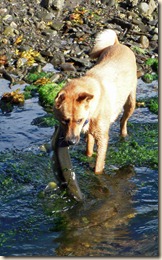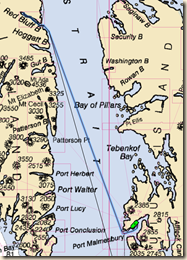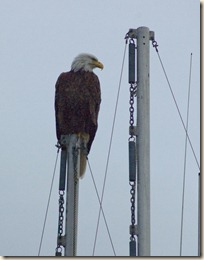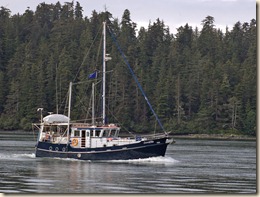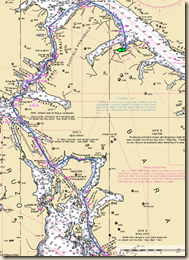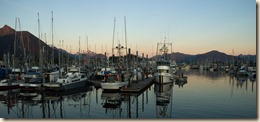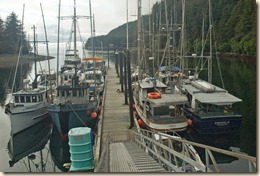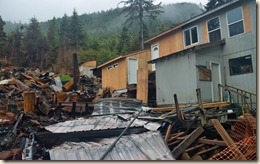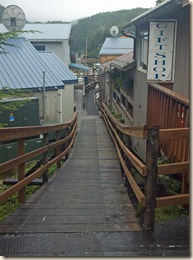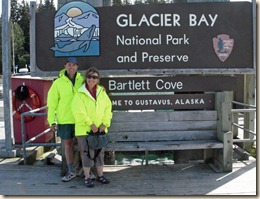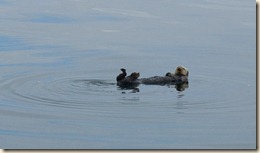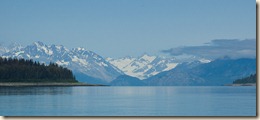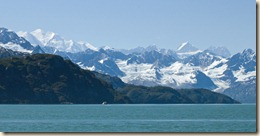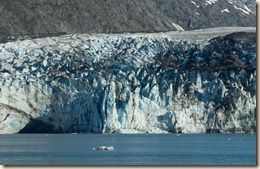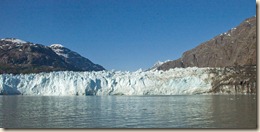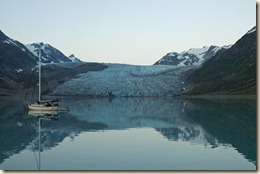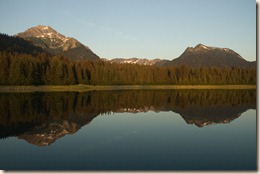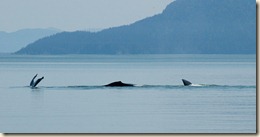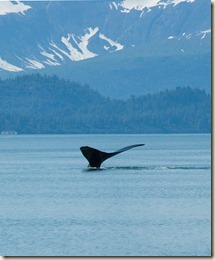We got back this afternoon from doing a short two night cruise to some local anchorages. Our “guide” has been Wade, a friend of the Nagles who is joining them for the return trip to Seattle. Wade is a retired United Airlines 747 pilot who, post retirement, worked summers in Sitka piloting tour boats for several seasons.
 On Saturday, 8/14, we travelled only a short distance to Samsing Cove, a lovely anchorage only 4 or 5 miles from Sitka. Getting in was a bit of a challenge as one of the fishing seasons was open and commercial fishing boats nearly had the route into Samsing blocked by gill nets. We followed the DavidEllis in as they wound their way through boats and nets. After making our way in, we rafted up to the now anchored DavidEllis.
On Saturday, 8/14, we travelled only a short distance to Samsing Cove, a lovely anchorage only 4 or 5 miles from Sitka. Getting in was a bit of a challenge as one of the fishing seasons was open and commercial fishing boats nearly had the route into Samsing blocked by gill nets. We followed the DavidEllis in as they wound their way through boats and nets. After making our way in, we rafted up to the now anchored DavidEllis.
From here we dinghied around to Pirate’s Cove, a quarter mile west. A lovely, white sand beach invited us to spend a sunny afternoon relaxing.
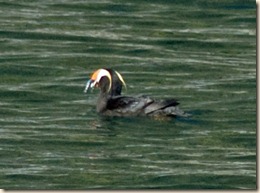 The next day, 8/15, after again transiting through active fishing, we headed towards St Lazaria Island. When Marcia and I visited Sitka in 2006 we did a tour to the island (perhaps even piloted by Wade?). The island is noted for its bird population, especially tufted puffins.
The next day, 8/15, after again transiting through active fishing, we headed towards St Lazaria Island. When Marcia and I visited Sitka in 2006 we did a tour to the island (perhaps even piloted by Wade?). The island is noted for its bird population, especially tufted puffins.
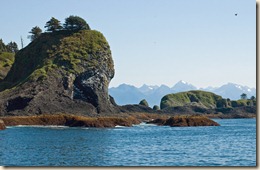 The rocky cliffs are preferred by nesting birds as predators cannot easily reach them. You spot the bird nesting areas by looking for the white color of the dried excrement from the birds.
The rocky cliffs are preferred by nesting birds as predators cannot easily reach them. You spot the bird nesting areas by looking for the white color of the dried excrement from the birds.
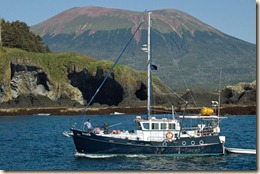 As we were leaving St. Lazaria Island, I snapped the photo left of the DavidEllis with the island in the foreground and Mount Edgecumbe, the extinct volcano on the north entrance of Sitka Sound, in the background. The skies were blue skies, the winds light and ocean swells modest as we rounded Cape Edgecumbe and headed north to Goleta Cove. It too has a lovely sandy beach on which we relaxed in the afternoon sun.
As we were leaving St. Lazaria Island, I snapped the photo left of the DavidEllis with the island in the foreground and Mount Edgecumbe, the extinct volcano on the north entrance of Sitka Sound, in the background. The skies were blue skies, the winds light and ocean swells modest as we rounded Cape Edgecumbe and headed north to Goleta Cove. It too has a lovely sandy beach on which we relaxed in the afternoon sun.
Below is a stitched photo (six photos combined into one) taken from the boats stern looking south towards the north side of Mt. Edgecumbe.

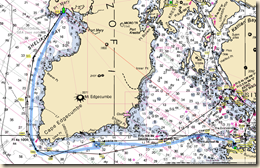 Along the route, we passed a milestone for us by having travelled more than 2000 miles since we left Seattle in the middle of May.
Along the route, we passed a milestone for us by having travelled more than 2000 miles since we left Seattle in the middle of May.
This morning, 8/16, the weather clearly had begun to change, so we pulled anchor and retraced our route to Sitka. We arrived back in Eliason Harbor on the north end of town shortly before 3 PM.
